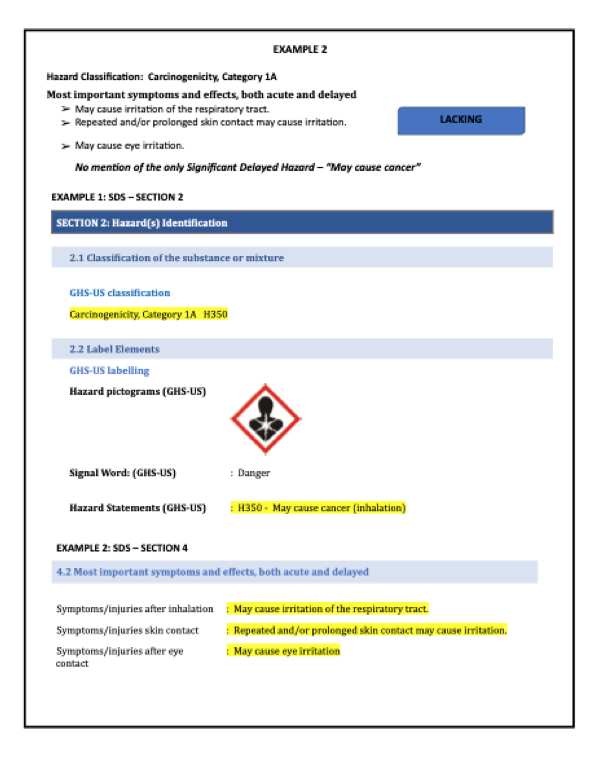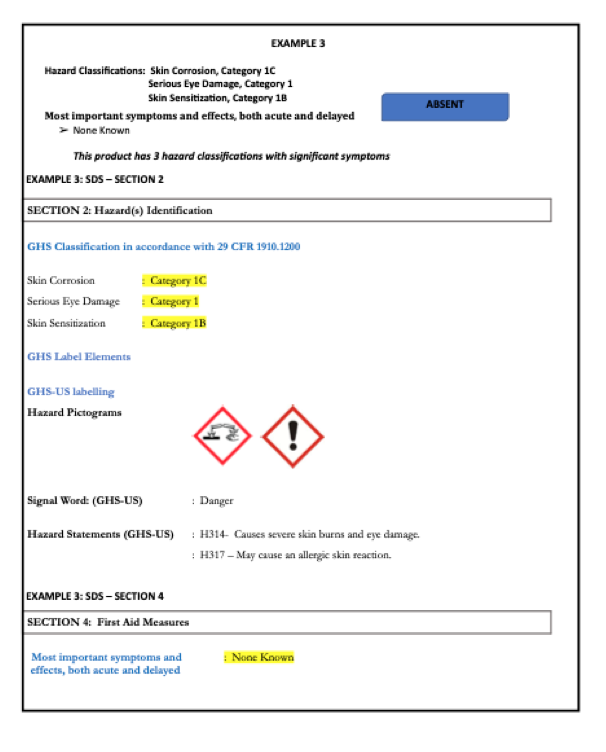By Rennee Karlik, Regulatory Compliance Specialist
We are now 5 years out of the mandatory implementation of GHS in the United States, as adopted by OSHA’s Hazard Communication Standard (HCS). We were given a roadmap for much-needed improvements in hazard communication. We were all tasked with learning new classification methods and the novel label elements for a “Harmonized” Section 2 of the SDS. However, more often than not, the “Harmony” stops there.
Much time and money has been spent mastering hazard classification and the correct format and required information for each section of the SDS. Far less time has been spent on the quality and harmony of the information contained throughout the SDS. It is often contradictory or disproportionate to the hazard classification. We need to revisit a basic requirement of successful communication, “Does it make sense? “
The SDS is meant to protect any worker who may be occupationally exposed to a hazardous chemical. It must be consistent, easy to understand, and free of contradictions in order to be of use to the intended audience. Section 2 provides the worker with a concise snapshot of product hazards and prevention and response measures. The subsequent sections of the SDS should paint a larger picture from that initial snapshot.
Section 4 of the SDS provides critical information in the case of occupational exposure. The first-aid measures described in this section should be clear, proportionate, and in alignment with the identified hazards. Unfortunately, this information is often lacking, disproportionate, and sometimes wrong. The adverse effects are often restated in the form of the hazard classification(s) with no additional details or symptoms of exposure. More useful to the worker than a hazard classification is a more detailed description of that hazard and what to expect if exposed. “May cause drowsiness or dizziness” does not make the same impact on the potentially exposed as “Inhalation may cause central nervous system depression, cough, headache, dizziness, nausea, vomiting, drowsiness, numbness, labored breathing and unconsciousness.
The harmonization of the SDS should not stop after Section 2. The entire SDS should be a reflection of the hazard classification. Conflicting and confusing statements should be avoided so that product hazards are clearly understood. From beginning to end – a Safety Data Sheet should make sense.
The examples provided below are from safety data sheets, chosen at random, from different manufacturers to evaluate the continuity and completion of Section 4 based on the hazard classifications(s). They all demonstrate information that is contradictory, disproportionate, lacking or absent.
Click to view/download.



If you are looking for a more simplified and streamlined way to author and manage safety data sheets and remain compliant, you are not alone.
Get in touch with our compliance specialists to hear more about how TotalSDS can help you.

